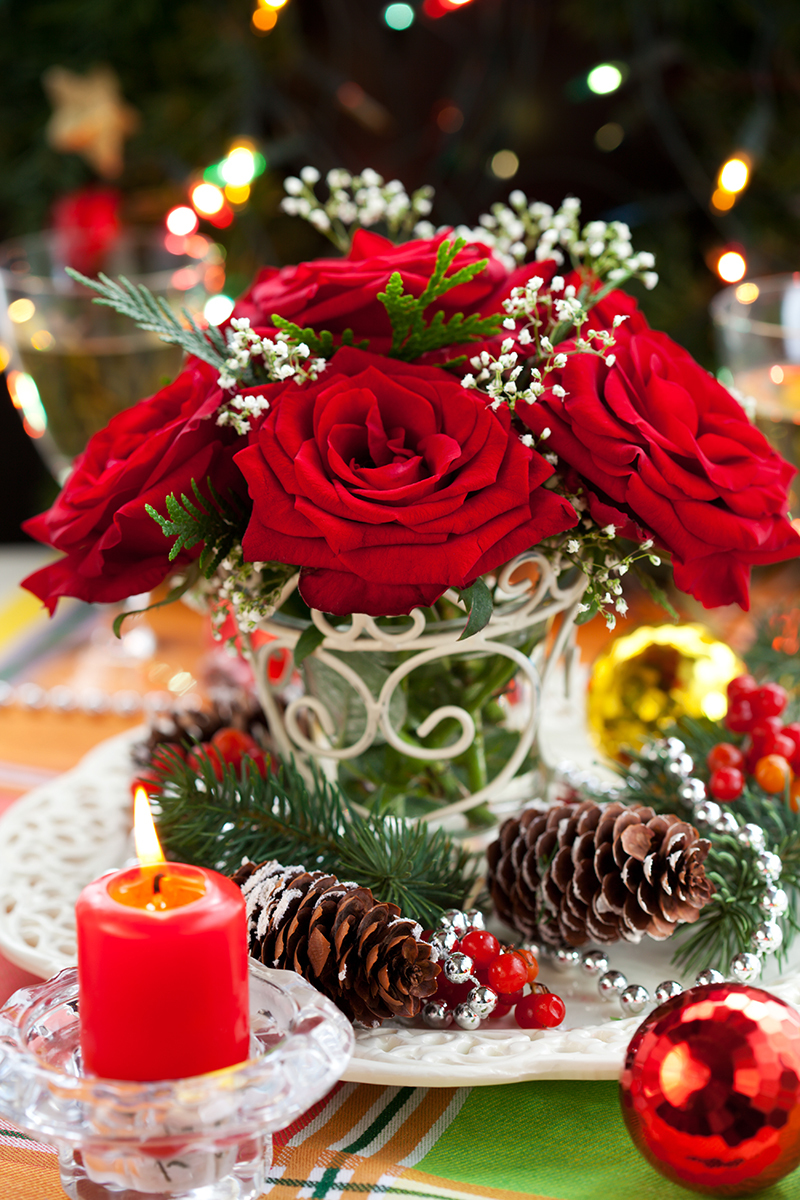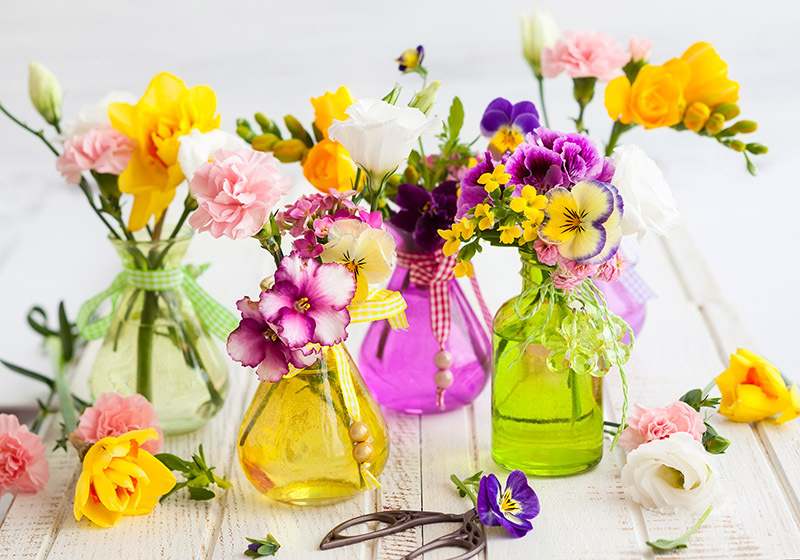Uncovering the Mysteries: 7 Facts About Tulips You Didn't Know
Posted on 28/08/2025
Uncovering the Mysteries: 7 Facts About Tulips You Didn't Know
Tulips are among the world's most beloved flowers, bringing vibrant colors and elegance to gardens, bouquets, and cultural traditions everywhere. Many know them for their beauty, but beneath their petals lies a world of captivating history, science, and mythology. Are you ready to dive deep and truly uncover the mysteries of tulips? In this article, we'll explore 7 fascinating facts about tulips you probably didn't know--including surprising tales and scientific insights that reveal why tulips are more extraordinary than you might think.
1. Tulip Mania: The First Economic Bubble in History
When we think of economic bubbles, we often consider recent times, but the phenomenon can be traced back centuries--right to the rise of tulip bulbs in the 17th-century Netherlands.
How Tulips Became an Economic Sensation
In the early 1600s, tulip bulbs became a coveted luxury in Dutch society, symbolizing wealth and prestige. Rare varieties fetched astronomical prices, and bulbs were traded on the Amsterdam stock exchange.
- Tulip prices soared to the extent that a single bulb could cost more than a house.
- The most prized were tulips with unique patterns, later discovered to be caused by a virus.
- When the market crashed in 1637, fortunes were lost overnight, leaving behind a cautionary tale of speculation and greed.
Tulip Mania is recognized as the first recorded speculative bubble in financial history. This story forever changed the way we view rarity, beauty, and value in the botanical world.

2. The Surprising Origins of Tulips
Where Do Tulips Come From?
Tulips are most often linked with the Netherlands (even called the "Land of Tulips"), but surprisingly, their origins lie further east.
- Native Range: Tulips originally grew wild in the mountainous regions stretching from Central Asia to Turkey.
- Early Cultivation: The Ottomans were among the first to domesticate and cherish tulips, incorporating them deeply in art, gardens, and festivals.
- Global Spread: It was only in the 16th century that tulip bulbs journeyed from Turkey to the Netherlands, where they truly found their fame.
Tulip's journey across continents shows how a humble mountain flower could transform into a worldwide cultural phenomenon.
3. Tulip Colors Carry Hidden Meanings
The Secret Language of Tulip Colors
Flowers have conveyed feelings and messages for centuries, and tulips are no exception. Different tulip colors symbolize a range of emotions and occasions--an important detail whether you're planning a garden or sending a bouquet.
- Red tulips: Underscore deep love and passion, frequently given to express true love.
- Yellow tulips: Traditionally represented jealousy, but now stand for cheerful thoughts and friendship.
- White tulips: Symbolize forgiveness, purity, and renewal. They are often seen at weddings and as a gesture of apology.
- Purple tulips: Represent royalty, dignity, and admiration.
- Black or deep purple tulips: Mysterious, rare, and often associated with power or elegance.
Next time you give or receive tulips, consider the hidden meanings their colors convey!
4. The Science Behind Tulip Patterns
Why Do Some Tulips Have Stripes?
Perhaps you've seen tulips with striking feathered stripes or "broken" colors. For centuries, these patterns dazzled horticulturists and artists alike. But did you know that these unique looks are the result of a viral infection?
- The culprit is the Tulip Breaking Virus (TBV), a pathogen that infects tulip bulbs and disrupts pigment production.
- This results in beautiful and unpredictable color streaks, feathered patterns, and flame-like decorations.
- During Tulip Mania, bulbs displaying these "broken" colors were the most expensive and desirable.
Modern growers carefully control for TBV, ensuring both the health and the beauty of today's tulip varieties. Yet, the fascination with "broken tulips" remains, with enthusiasts cherishing heirlooms that recall this mysterious past.
5. Tulip Festivals: Celebrating Beauty Worldwide
The Global Love Affair with Tulips
Tulip festivals are held around the globe in spring, honoring their vibrant colors and bringing communities together. These lively events feature millions of blooming tulips, cultural parades, music, and traditional foods.
- Keukenhof Gardens (Netherlands): Known as the "Garden of Europe," it showcases more than seven million tulips every year.
- Canadian Tulip Festival (Ottawa, Canada): Began as a symbol of friendship between Canada and the Netherlands after World War II when Dutch royalty gifted tulip bulbs to Canada.
- Istanbul Tulip Festival (Turkey): Celebrates the flower's ancient origins, with vibrant displays throughout the city and in famous parks.
Visiting a tulip festival is a bucket-list experience for nature lovers, photographers, and anyone enchanted by dazzling displays of floral beauty.
6. Rare and Unique Tulip Varieties
Unusual Tulips You Probably Haven't Seen
Tulips are not limited to the classic cup-shaped blooms you see in parks and gardens. There are over 3,000 officially registered varieties, belonging to 15 divisions based on their size, color, bloom time, and flower form.
- Parrot Tulips: Dramatic, feather-like petals resembling tropical birds. Their twisted shapes and vivid colors make them truly eye-catching.
- Fringed Tulips: Edged with a delicate "fringe" or crystalline border, adding a whimsical touch to gardens.
- Viridiflora Tulips: Notable for distinctive green stripes on the petals, creating a spectacular contrast with other colors.
- Rembrandt Tulips: The legendary "broken" tulips with streaks and flames, reminiscent of the prized varieties during Tulip Mania.
- Double Late (Peony) Tulips: Ruffled, multi-petaled flowers that resemble peonies, available in numerous vibrant shades.
Collectors and gardeners alike hunt for these rare specimens, celebrating tulip diversity that goes far beyond the familiar.
7. Unexpected Uses of Tulips
Tulips in Food, Medicine, and Culture
Did you know that tulips have been used in ways that extend far beyond garden beds and flower shops? Throughout history, tulips have played roles in cuisine, medicine, and even survival.
- Edible Tulip Petals: Certain tulip varieties are edible in small quantities and have been used as a garnish or salad addition. Their taste is described as mild, slightly sweet, or reminiscent of peas. However, caution is advised: not all tulip species are safe to eat, and bulbs are toxic if ingested.
- World War II Relief: During food shortages in the Netherlands, people boiled and ate tulip bulbs to survive. Though starchy, the bulbs kept many from starvation in desperate times.
- Folk Remedies: Historically, some cultures experimented with tulip petals and bulbs in herbal medicine, often as poultices for rashes or bites. Modern medicine, however, does not support such uses.
- Symbolism: Tulips are symbols of love, renewal, abundance, and change in numerous cultures.
Tulips are more than ornamental--they are woven into the fabric of human survival and symbolic expression.

Bonus: Tips for Growing and Enjoying Tulips at Home
Bring the Mysteries of Tulips into Your Life
Inspired by these fascinating tulip facts? Here's how you can grow and appreciate these mesmerizing flowers:
- Plant in Autumn: For best results, plant tulip bulbs in cool fall soil, allowing them to establish roots before winter.
- Choose Well-Drained Soil: Tulips dislike soggy soil--ensure proper drainage to avoid rotting bulbs.
- Use Bulb Fertilizer: Apply a balanced fertilizer at planting for robust spring blooms.
- Try Naturalizing: Some tulip species reliably return each year--plant them in clusters for a natural look.
- Cut Carefully: Harvest tulips in the morning when buds are still tight for longer-lasting bouquets.
With a little care, you can enjoy the magic and mystery of tulips every spring--right in your own backyard or home.
Conclusion: The Enduring Allure of Tulips
From the heights of Tulip Mania to the colorful spectacle of today's gardens and festivals, tulips have captivated hearts and imaginations for centuries. Their origins are ancient, their symbolism rich, and their stories filled with both beauty and mystery. Whether you are a longtime tulip lover or a newcomer, there are always new curiosities to discover about these remarkable flowers.
Uncovering the mysteries of tulips isn't just about learning history--it's about celebrating nature, culture, and the unexpected surprises hidden in each petal.
Next time you spot a tulip in bloom, remember: there's more to this enchanting flower than meets the eye. Happy gardening and tulip-spotting!
Related Articles:
- How to Grow Tulips Successfully: A Beginner's Guide
- The Secret Language of Flowers: More Floral Meanings
- Spring Flower Festivals Around the World
Latest Posts
Hidden Wonders: 8 Facts About Sunflowers
Uncovering the Mysteries: 7 Facts About Tulips You Didn't Know
How to Preserve the Freshness of Your Cut Flowers





